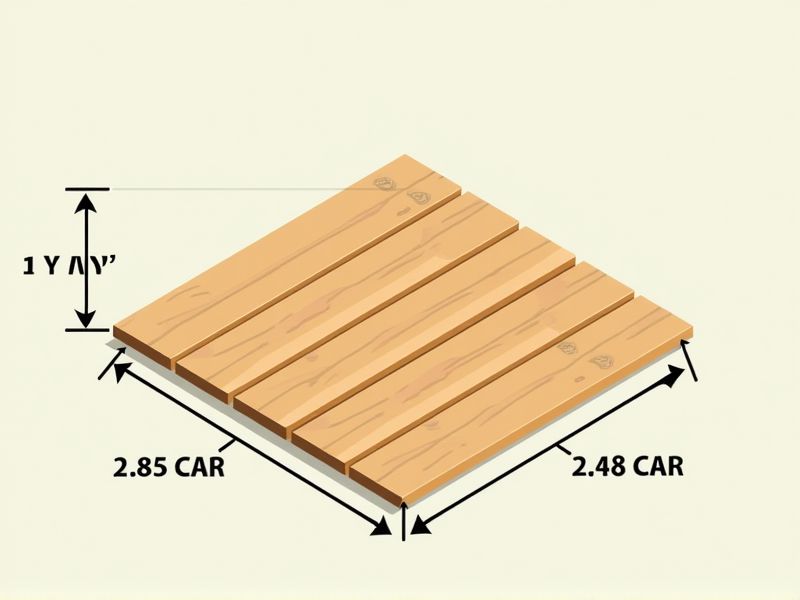
When planning an outdoor deck, standard dimensions often depend on the intended use and available space, but most decks typically range from 12 to 16 feet in depth and 10 to 20 feet in width. For example, a common size for a small seating area might be 12 feet by 12 feet, while decks meant to accommodate dining tables or larger gatherings may measure 16 feet by 20 feet or larger. It's important to also consider local building codes, which often dictate minimum width for stairs or rail height for safety. By carefully choosing the dimensions that fit your needs and comply with regulations, you can maximize your outdoor living space and enjoyment.
Deck Height Regulations
Deck height regulations typically vary by locality but often require that decks be no higher than 30 inches above grade without guardrails. For heights exceeding this threshold, a minimum guardrail height of 36 inches is commonly enforced to ensure safety. It is essential to check local building codes, as these might stipulate specific requirements for deck materials and structural support. Ensuring compliance with these regulations not only fosters safety but also maximizes your deck's longevity and effectiveness.
Maximum Span For Joists
The maximum span for joists in outdoor deck construction is typically 24 inches on center, but can vary based on the type of wood and size of the joists used. For example, southern pine joists sized 2x10 can safely span up to 14 feet when supporting a standard load. If you're using composite decking materials, it's crucial to check the manufacturer's specifications, as they can impose stricter requirements on joist spacing. Ensuring compliance with local building codes will help maintain the structural integrity and safety of your deck.
Railing Height Standards
Railing height standards for outdoor decks typically range from 36 to 42 inches, depending on local building codes. This height is essential for ensuring safety and preventing falls, especially for elevated decks. In many jurisdictions, a minimum height of 36 inches is required for residential properties, while commercial structures may need 42 inches. You should always verify the specific regulations in your area, as adherence to these standards can safeguard your outdoor space effectively.
Minimum Headroom Clearance
The minimum headroom clearance for outdoor decks should be at least 7 feet (2.13 meters) to ensure safety and comfort. This measurement protects users from bumping their heads and allows for adequate airflow and light beneath the structure. Local building codes may vary, so it's essential to verify specific requirements for your geographical area. When planning your deck, consider the overhead obstacles, such as trees or eaves, to maintain this critical clearance.
Standard Stair Dimensions
Standard outdoor deck stair dimensions typically include a rise of 7 to 8 inches and a run of 10 to 11 inches per step, ensuring safety and comfort while using the stairs. The overall width of the stairs should be at least 36 inches for accessibility, allowing for easy movement. Handrails are essential, required at a height of 34 to 38 inches, providing support for users. When designing your deck, adhering to these dimensions not only enhances safety but also complies with local building codes, which often specify these standards.
Uniform Deck Board Spacing
Uniform deck board spacing is critical for the longevity and aesthetic appeal of outdoor decks, generally recommended at 1/8 to 1/4 inch apart. Maintaining this spacing allows for adequate drainage, preventing moisture accumulation that can lead to mold and rot. Proper spacing also accommodates the natural expansion and contraction of materials due to temperature fluctuations, which can be particularly important in regions experiencing extreme weather. To achieve optimal results, consider using spacers during installation, ensuring even gaps across your entire deck surface.
Beam Size And Spacing
The standard beam size for outdoor decks typically ranges from 2x6 inches to 2x12 inches, depending on the load requirements and span distances. Proper spacing between beams is crucial, with recommendations generally falling between 6 to 8 feet apart to ensure structural integrity. For residential decks, using a 16-inch on-center spacing is common for joists, providing enhanced support and stability. Ensuring compliance with local building codes is essential for safety and longevity, as codes may specify minimum requirements based on your region's climate and environmental conditions.
Ledger Board Requirements
The ledger board is a critical component for securing your outdoor deck to a building, requiring a minimum width of 2 inches and a depth of 1.5 inches. To ensure structural integrity, it should be made of pressure-treated wood, which resists decay and insect damage for long-lasting durability. Fasteners must be stainless steel or galvanized, adhering to specifications that stipulate a minimum of 3 nails every 16 inches. Local building codes may also mandate specific anchor types or installation techniques, so consulting those regulations before proceeding is essential for safety and compliance.
Post Spacing Guidelines
Adhering to post spacing guidelines is crucial for ensuring the structural integrity and safety of your outdoor deck. Typically, the standard spacing for deck posts is 6 to 8 feet, depending on the deck's size and the load it will support. For optimal durability, consider using pressure-treated lumber or composite materials that resist weathering and decay. If you plan to install a railing system, ensure spacing between posts does not exceed 4 feet to meet safety codes and prevent accidents.
Maximum Deck Load Capacity
The maximum deck load capacity is critical to ensuring the safety and longevity of your outdoor deck, typically ranging from 40 to 60 pounds per square foot depending on design and materials used. When planning your deck, factor in the weight of furniture, people, and environmental stressors like snow or rain, which can add significant loads. Reinforcing your deck structure with proper joists and beams can enhance its load-bearing capabilities, protecting against sagging and structural failure. Regular inspections, especially after heavy storms, are essential to maintain optimal safety and performance for your outdoor living space.
